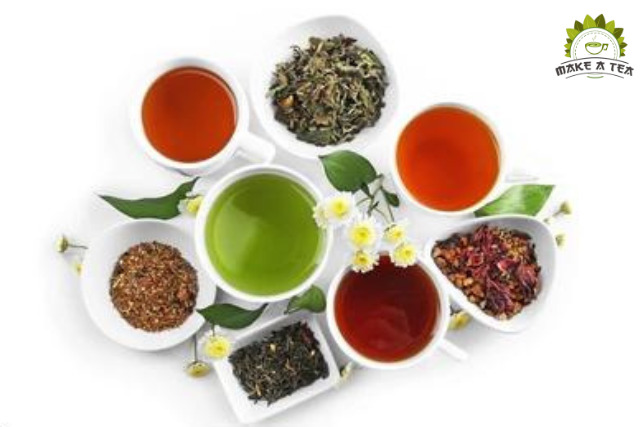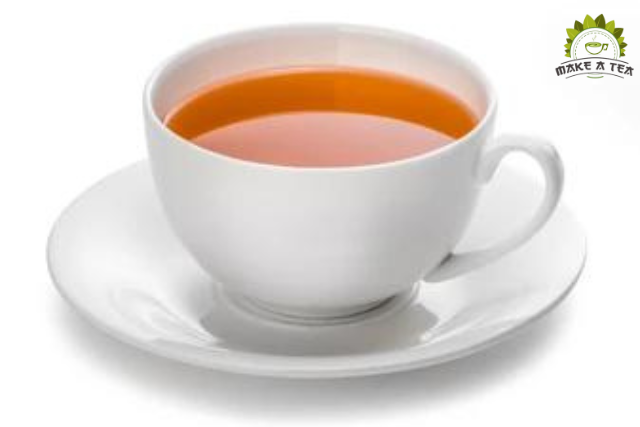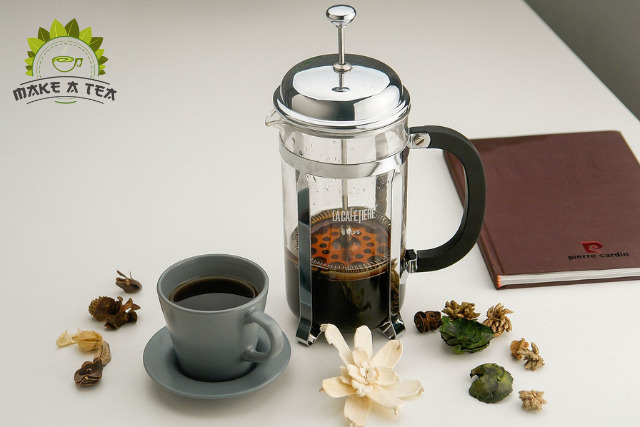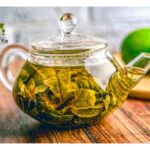There’s nothing quite as comforting as a hot cup of tea. But what if you don’t have a kettle? Don’t worry! Making tea without a kettle is easier than you might think.
In this guide, I’ll show you how to make tea without a kettle using everyday kitchen tools.
How to Make Tea Without a Kettle | Step-by-Step Guide

Brewing tea at home is cozy and easy. If you have a kettle, great! But if not, don’t worry, you can still make tea.
If you drink tea a lot, consider getting a kettle, like a whistling one. But if you’re not a big tea fan, these methods work fine without one. No need to buy something you won’t use often.
To get started, you’ll need the following ingredients and tools:
Ingredients:
- Water: Always use fresh, cold water for the best results. The quality of water significantly impacts the flavor of your tea.
- Tea Leaves or Tea Bags: Choose your favorite tea variety – black, green, herbal, or any other. The choice of tea sets the tone for your tea experience.
Tools:
- A Microwave or Stovetop: You’ll need a heating method, and a microwave or stovetop will work.
- A Microwave-Safe Container or Pot: Select a suitable container to heat the water. For the stovetop, a pot is essential.
- A Cup or Mug: Your trusty vessel for enjoying the finished product.
- A Spoon: You’ll use this to stir and measure your tea leaves or tea bags.
- Temperature Control Kettle: If you do have a kettle, a temperature control kettle is a convenient option for precise water temperature.
How to Make Tea Without a Kettle | Simple Instructions
Now that you’ve gathered your ingredients and tools, let’s start the step-by-step process of making tea without a kettle.
Boiling Water in a Microwave
- Start by filling a microwave-safe container with the amount of water you need.
- Place the container in the microwave and heat it on high for about 1–2 minutes. But, exercise caution, as water can superheat in a microwave.
- When the water is hot but not boiling, carefully remove the container from the microwave using oven mitts or a towel.
Boiling Water on a Stovetop
- Pour the required amount of water into a pot.
- Set the pot on the stovetop over medium-high heat.
- Keep a close eye on the water. Once it begins to simmer (small bubbles forming), it’s ready.
- Remove the pot from the heat source.
Using an Electric Water Heater
If you have an electric water heater, it’s as simple as filling it with water and turning it on. The heater will automatically heat the water to your desired temperature.
Types of Tea and Brewing Times

Tea comes in various types, each with its unique characteristics and brewing requirements. Understanding these varieties will help you achieve the perfect cup of tea.
- Black Tea: Typically brewed with boiling water and steeped for 3-5 minutes. It’s robust and slightly bitter, often enjoyed with milk and sugar.
- Green Tea: Requires a lower temperature, around 175°F (80°C), and a shorter steeping time of 2–3 minutes. It has a fresher, grassy flavor with various health benefits.
- Herbal Tea: Brewed with boiling water for 5–7 minutes. Herbal teas are caffeine-free and come in a wide range of flavors and health benefits.
Feel free to adjust these times based on your personal taste preferences. Steeping times can also affect the tea’s strength and flavor profile, so don’t hesitate to experiment.
Tips for a Perfect Cup of Tea

Now that you’ve mastered the basics, here are some pro tips to ensure your tea-making skills are second to none:
- Use Fresh and Cold Water: As mentioned earlier, the quality of water is paramount. Fresh, cold water brings out the best flavors.
- Mind the Water Temperature: Be cautious not to overheat the water, as it can make your tea taste bitter. The right water temperature ensures a well-balanced flavor.
- Measure Your Tea: It’s all about balance. Use the recommended amount of tea leaves or tea bags to achieve the perfect taste.
- Cover Your Tea: While steeping, covering your tea helps retain the aromatic compounds, enhancing the overall experience.
- Experiment with Steeping Times: Feel free to adjust steeping times to find the perfect balance of flavor, strength, and aroma.
Flavor Variations
One of the joys of making tea is the opportunity to customize it to your liking. Get creative with these flavor variations:
- Lemon Zest: A twist of fresh lemon zest adds zing and brightness to your tea.
- Honey: Sweeten your tea naturally with honey, offering a pleasant and delicate flavor.
- Ginger: A slice of ginger can bring a warm, spicy kick to your cup.
- Mint Leaves: Add a few fresh mint leaves for a refreshing, cool taste.
Experiment and find your perfect combination of flavors to make each cup of tea a unique experience.
Health Benefits of Tea

Beyond its delightful taste, tea offers many health benefits:
- Antioxidants: Tea is rich in antioxidants that help protect your cells from damage.
- Digestive Aid: Certain herbal teas can aid digestion and soothe an upset stomach.
- Metabolism Booster: Green tea, in particular, has been linked to boosting metabolism and aiding in weight management.
- Tea for Singers: Chamomile tea, in particular, is known to soothe the throat and is often favored by singers for its calming effect on the vocal cords.
Tea has been enjoyed for centuries not only for its taste but also for its potential health benefits. It’s a soothing and refreshing way to nurture your well-being.
Serving and Enjoying Your Brew

After the brewing process, the best part is serving and enjoying your freshly made tea. Here’s how to do it:
- Carefully pour your tea into a cup or mug, ensuring that you leave enough space to avoid spills.
- Allow your tea to cool slightly before sipping. The aroma will be at its most enticing.
- You can pair your tea with a variety of snacks or enjoy it on its own. The choice is yours!
FAQs
Can you make tea without boiling?
Yes, you can make tea without boiling water. While boiling water is a common method, you can use hot tap water or water heated to below boiling point, which is around 200°F (93°C), for most tea types. Avoid using cold water, as it won’t extract the flavors effectively.
How do you make tea on the stove?
To make tea on the stove, follow these steps:
- Fill a pot with the desired amount of cold water.
- Place the pot on the stove over medium-high heat.
- Wait for the water to reach a simmer (small bubbles forming) but not a rolling boil.
- Remove the pot from the heat and add your tea leaves or tea bag.
- Allow it to steep for the recommended time, and then enjoy your tea.
Can you make tea in a microwave?
Yes, you can make tea in a microwave. To do so, follow these steps:
- Pour the desired amount of cold water into a microwave-safe container.
- Heat the water in the microwave for 1-2 minutes until hot but not boiling.
- Remove the container, and add your tea leaves or tea bag.
- Allow it to steep for the recommended time, and your tea is ready.
How do you make hot tea without a stove?
To make hot tea without a stove, you can use an electric water heater or a microwave. Follow the steps mentioned above for either method. You can also use hot tap water, but ensure it’s at the right temperature for your tea type.
Can I make tea with cold water?
While cold brewing is popular for iced tea, it’s not suitable for traditional hot tea. To extract the flavors, you should use hot water, but it doesn’t necessarily have to be boiling. Use water heated to the appropriate temperature for your tea type.
What is the cheapest way to make a cup of tea?
The cheapest way to make a cup of tea is to use basic kitchen tools and regular tea bags or loose tea leaves. Avoid investing in expensive tea-making equipment. By using a microwave or stovetop, you can efficiently prepare tea without the need for specialized devices.
How to make tea without tea bag or tea leaves?
If you don’t have tea bags or tea leaves, you can make tea using alternative flavor sources such as herbs, spices, or fruit peels. infuse these ingredients in hot water to create a unique and flavorful beverage.
How much tea for 1 cup?
The amount of tea you need for 1 cup varies based on personal preference and the type of tea you’re using. As a general guideline, a standard tea bag or one teaspoon of loose tea leaves is enough for a single cup. Adjust the quantity to suit your taste.
What is the easiest way to make tea?
The easiest way to make tea is by using a tea bag and hot water. Simply steep the tea bag in hot water for the recommended time, and your tea is ready to enjoy. This method is convenient and requires minimal effort.
Final Verdict
This complete guide shows you how to make tea without a kettle. I’ve covered ingredient selection, tool choices, and exploring different tea types. Making tea is not just a process; it’s an experience.
Whether you’re making tea on the stove with tea bags, in a microwave, or even without a strainer, the possibilities are endless. So go ahead, make tea with milk, and relish the soothing, aromatic cup that you’ve created.
Making tea without a kettle might be a hassle, but it’s worth it for dedicated tea fans. Now you know how to do it, so you can have tea anytime you want.







